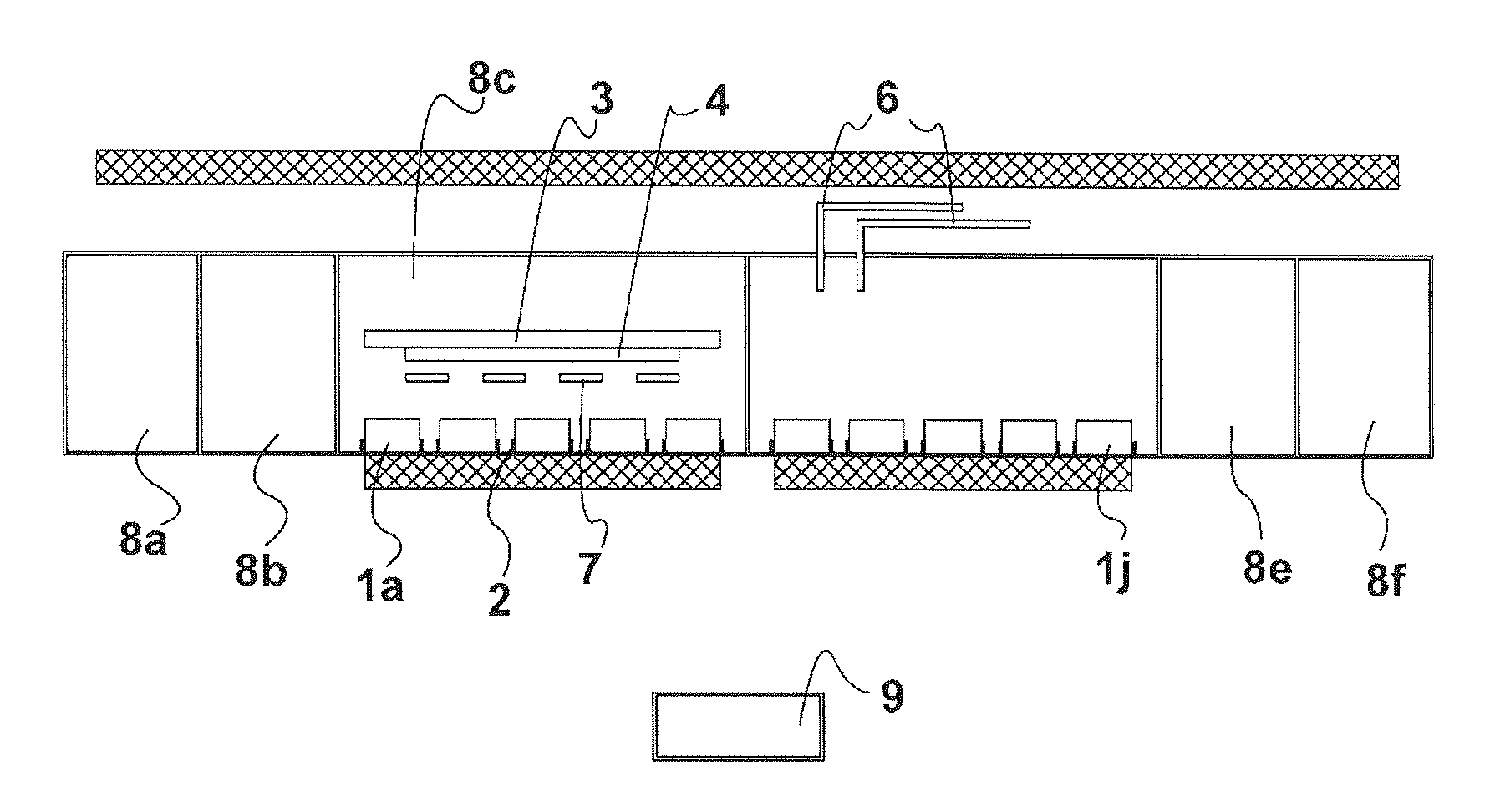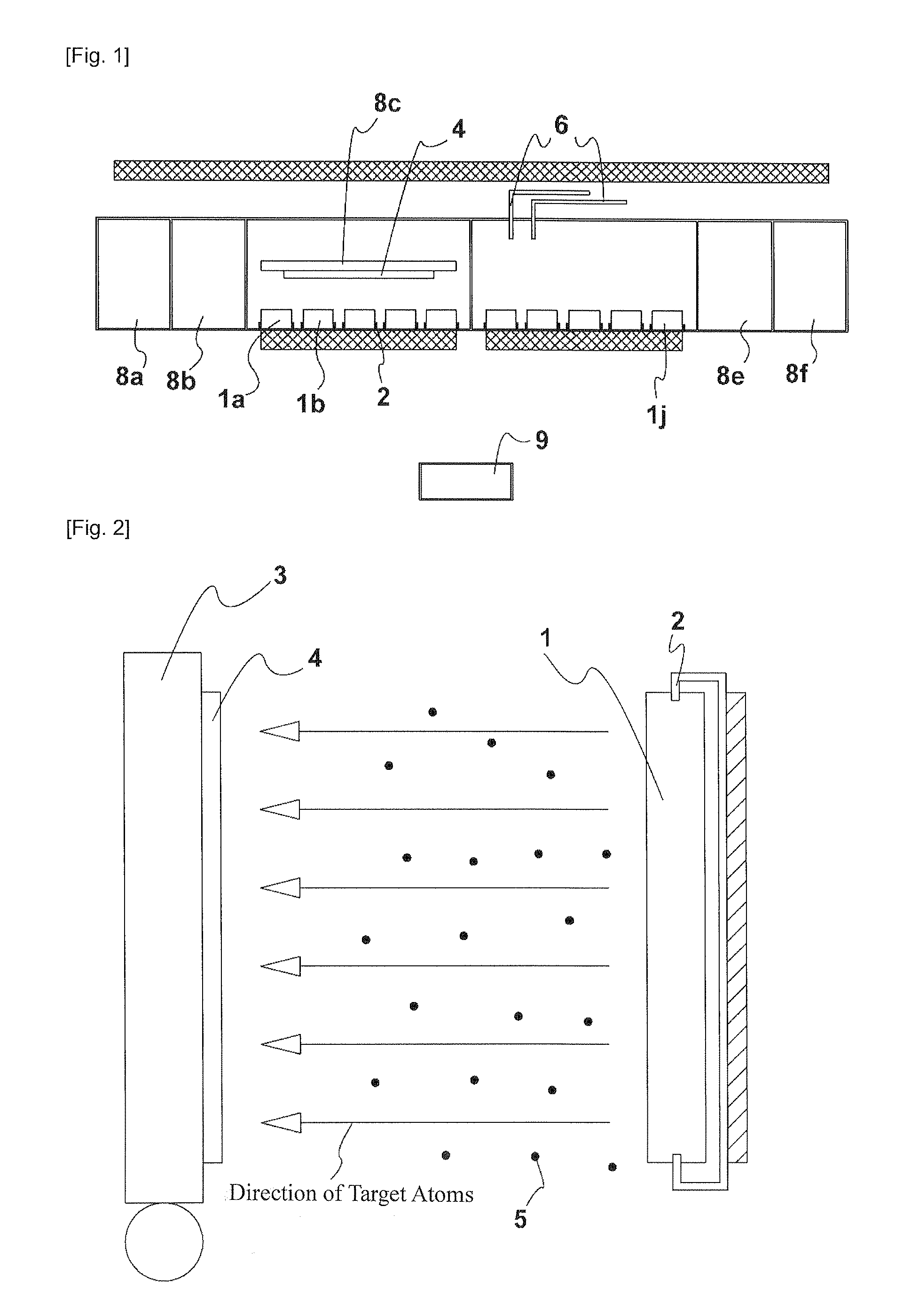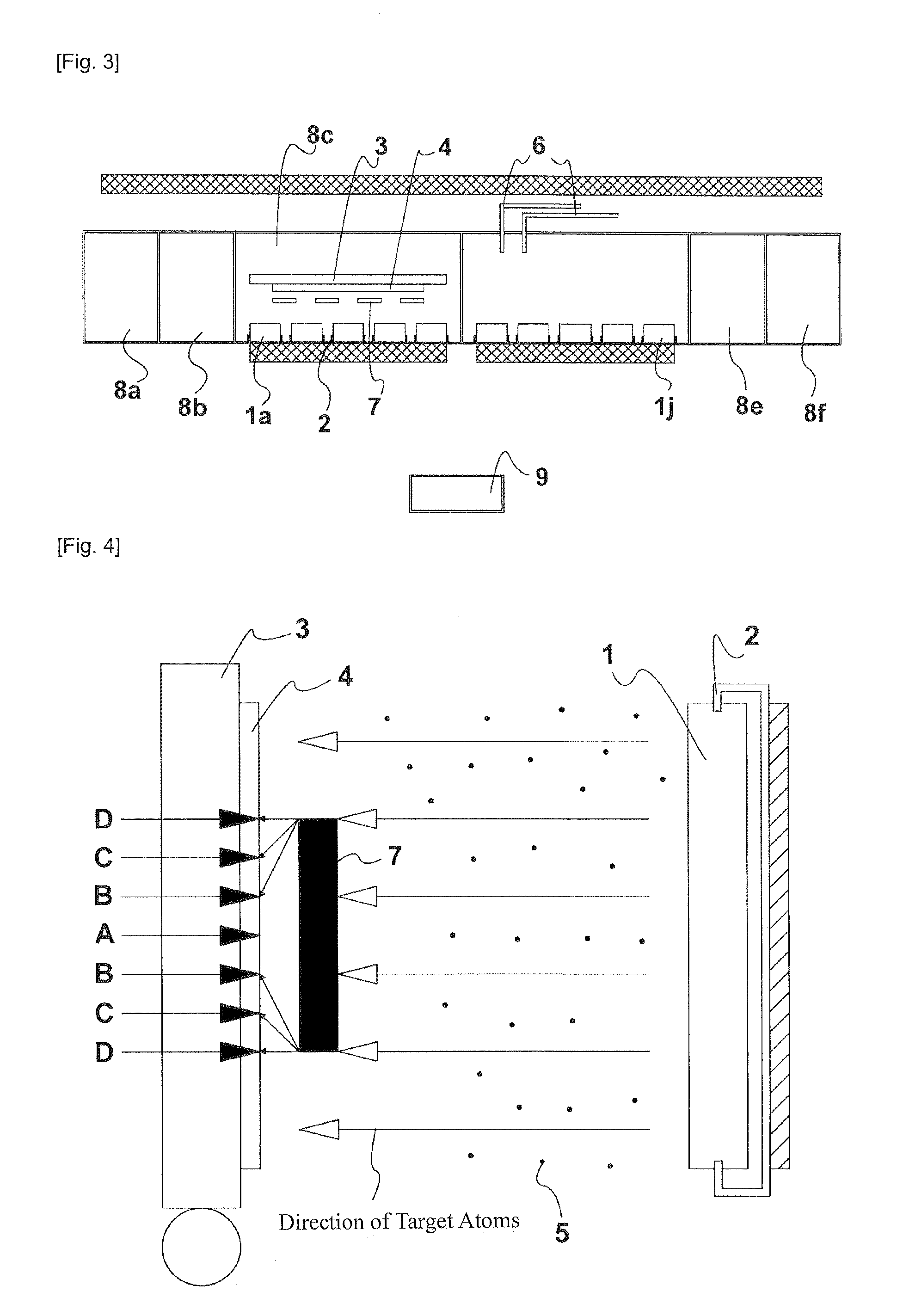Vacuum deposition method for forming gradient patterns using vacuum device
a vacuum device and gradient pattern technology, applied in the field of vacuum deposition method, to achieve the effect of low installation
- Summary
- Abstract
- Description
- Claims
- Application Information
AI Technical Summary
Benefits of technology
Problems solved by technology
Method used
Image
Examples
embodiment 1
[0039]Titanium was used as the metal targets 1, and the degree of vacuum inside the chambers 8 was 8.5K×10−4 TORR and argon gas of 450 SCCM was injected by two DC sputters of 5 kw. After that, as shown in FIG. 5, the plural (seven) blocking members 7 were vertically arranged at a predetermined interval between the substrate 4 and the metal targets 1, and then, plasma was irradiated, and thereby, vertically gradient patterns were produced as shown in FIG. 6.
[0040]In FIG. 6, black parts are parts which were not affected by the blocking members 7, but white parts are parts which had a relatively great influence by the blocking members.
embodiment 2
[0041]Titanium was used as the metal targets 1, and the degree of vacuum inside the chambers 8 was 8.5K×10−4 TORR and argon gas of 450 SCCM was injected by two DC sputters of 5 kw. After that, as shown in FIG. 7, the plural (two) blocking members 7 were horizontally arranged at a predetermined interval between the substrate 4 and the metal targets 1, and then, plasma was irradiated, and thereby, the deposited form was indicated as shown in FIG. 6.
[0042]In FIG. 8, black parts are parts which were not affected by the blocking members 7, but white parts are parts which had a relatively great influence by the blocking members.
[0043]FIG. 9 is a view showing another example of the blocking members according to the present invention, and FIG. 10 is a view showing a gradient pattern formed by the blocking members of FIG. 9.
[0044]If blocking members 7, each of which includes a circular body 7b and projections 7a formed on right and left sides or upper and lower sides of the circular body 7b ...
PUM
| Property | Measurement | Unit |
|---|---|---|
| voltage | aaaaa | aaaaa |
| transmission | aaaaa | aaaaa |
| transmission rates | aaaaa | aaaaa |
Abstract
Description
Claims
Application Information
 Login to View More
Login to View More - R&D
- Intellectual Property
- Life Sciences
- Materials
- Tech Scout
- Unparalleled Data Quality
- Higher Quality Content
- 60% Fewer Hallucinations
Browse by: Latest US Patents, China's latest patents, Technical Efficacy Thesaurus, Application Domain, Technology Topic, Popular Technical Reports.
© 2025 PatSnap. All rights reserved.Legal|Privacy policy|Modern Slavery Act Transparency Statement|Sitemap|About US| Contact US: help@patsnap.com



